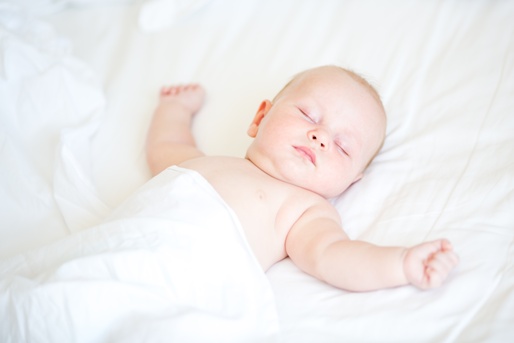
A question about baby mattresses was submitted recently to our Wholesome Mama's Facebook group, and the answer is important to share with new and expectant parents. Babies spend a lot of time sleeping, an estimated 16 to 18 hours per day. For decades, the AAP (American Academy of Pediatrics) has promoted the “Back to Sleep” campaign, encouraging babies to sleep on their backs, which has been successful in reducing the incidence of SIDS. However, there is evidence that the mattress that your baby sleeps on may also increase a baby’s risk of SIDS.
Studies show infants exposed to chemical emissions from mattresses
In 2014, a study by the University of Texas was released which found that “infants are exposed to high levels of chemical emissions from crib mattresses.” The researchers examined 20 new mattresses and found that they contained over 30 volatile organic compounds (VOCs). Moreover, new crib mattresses release about 4 times the amount of VOCs as old mattresses. And even more alarming is that the VOC level is significantly higher in the infant’s breathing space than in the general air. The researchers estimated that the infant laying in the crib is exposed to twice the VOC levels as someone standing in the room. Therefore, the researchers concluded that a good strategy to reduce this VOC exposure would be to let a new mattress air out for an extended period of time, perhaps in a garage or outdoors.
This research seems to suggest that an old mattress would be protective; however, a used mattress comes with risks as well. Dr. Jim Sprott, a New Zealand scientist, is convinced that a number of chemicals, which includes phosphorous, arsenic and antimony used in fire retardants, are directly responsible for SIDS.
His theory is that these chemicals combine with fungi in the mattress and create a toxic gas. He further proposes that used mattresses are more likely to have the fungus in it to mix with these chemicals than new mattresses. His theory is based upon a research study in published in 1994 by Dr. B. Richardson which brought this information to light. Dr. Sprott strongly recommends that these chemicals be removed from crib mattresses, but industry standards continue to mandate the inclusion of fire retardants.
Protection from chemicals and gases in crib mattresses
Further support for Dr. Sprott's theory is a campaign in New Zealand that has resulted in a drastic reduction in SIDS. Since 1995, some healthcare providers have been encouraging parents to wrap their crib mattress in a cover that is impermeable to gas. Over an 11 year period after this campaign began, there was a 70% reduction in SIDS in New Zealand. In fact, no SIDS cases have occurred in babies that sleep on a properly wrapped mattress.
Therefore, based on this research, here are some recommendations for safe sleep for your baby:
- Use a mattress that is made of organic materials and that does not contain VOCs. There are numerous brands available. These mattresses tend to be substantially more expensive than a typical mattress, and therefore may not be affordable for some families.
- A much less expensive alternative is to wrap your baby’s mattress in a gas-impermeable mattress cover for a cost of about $50. Learn more about Baby Safe mattress covers at http://www.babymattresscovers.com/acg6/store/agora.cgi
- Finally, continue to put your baby on his back to sleep.
References:
Boor, B., Jarnstrom, H., Novoselc, A. Infact exposure to Emissions of Volatile Organic Compounds From Crib Mattresses. Environ Sci Technol. 2014, 48(6): 3541-9
Richardson, B. Sudden Infant Death Syndrome: A Possible Primary Cause. J. Forensic Sci. Soc. 1994; 34(3): 199-204.
http://www.healthychild.com: Toxic Gases in Baby Crib Mattresses.
http://www.stopsidsnow.com: Success of Mattress-Wrapping for Crib Death (SIDS) Prevention
Learn more about holistic & integrative pediatrics.
.png?width=305&height=132&name=NIHAlogoBLUE_3_transparent%20(2).png)
